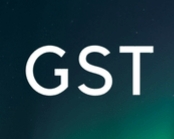| Discussions Forum | ||||||||||||||||||||||
Home  Forum Forum  Goods and Services Tax - GST Goods and Services Tax - GST  This This 
A Public Forum.
Submit new Issue / Query
My Issues
My Replies
|
||||||||||||||||||||||
Goods return by Tax Invoice, Goods and Services Tax - GST |
||||||||||||||||||||||
|
||||||||||||||||||||||
Goods return by Tax Invoice |
||||||||||||||||||||||
Dear Experts, We return the material to the suppliers with a cover of Tax Invoice and the same is included in our GSTR-1. However, the supplier also issues the credit note for the same transaction and thereby it reflects in GSTR-2B and reducing our ITC. This poses Net ITC Mismatch and a lot of reconciliation issues. Please advise any remedy. Thanks in advance. Posts / Replies Showing Replies 1 to 5 of 5 Records Page: 1
In GST, the supplier is permitted to issue credit note against his supply. So, the credit note issued by your supplier holds good. As a buyer while returning goods you issued tax invoice and it is incorrect. You may raise a credit note to nullify the effect.
Sir, Then what should be the document we have to prepare to return the goods back to the supplier? Thanks.
You're absolutely right—this scenario often leads to a Net ITC (Input Tax Credit) mismatch, and it creates confusion during monthly reconciliations between GSTR-1, GSTR-2B, and GSTR-2B. Let's break down the issue and offer some remedies. ✅ Your Current Process:
🔍 What’s Going Wrong? The issue is that both parties are accounting for the same transaction, but differently:
This duplication distorts ITC, especially if the supplier's credit note is automatically reducing your eligible ITC in GSTR-2B. ✅ Recommended Remedies Option 1: Avoid Issuing a Tax Invoice for Returns
📌 Why this works: You avoid double reporting. The Credit Note is enough to reverse the ITC in your books without needing to show a corresponding outward supply. Option 2: Use Debit Note/Credit Note Appropriately If the nature of return requires a Tax Invoice (e.g., for rejected materials sold on high-seas basis, or value adjustments), then:
Option 3: Mutual Agreement and SOP
Option 4: Communication & Documentation
✍️ Suggested Ideal Flow (Best Practice)
⚠️ Compliance Tip: Make sure the supplier issues the credit note within the prescribed time limits, or else the ITC reversal might not reflect in the correct tax period.
This is a everyday problem being faced by the accounts department. As correctly advised by respected Shri.Ganeshanji for goods return please send the goods under cover of delivery challan and ask for a credit note from the supplier. In the unlikely event you have issued a tax invoice and the supplier has also issued a credit note, you may nullify the tax invoice with credit note and if that is not acceptable, you may reject the credit note issued by the supplier in the IMS portal. This will automatically negate the credit note issued by the supplier. Nevertheless, please keep this as the final option. Also, one sage advice. With the advent of GST a supplier is no more a supplier. One has to work with them as equal partners, much akin to us working as partners with our valued customers.
Before you issuing invoice or supplier issuing CN, pls discuss and agree upon one of the modes. Either what you have done should be done or what the supplier has done should be done. You guys cannot do both which will lead to reco issues. Page: 1 |
||||||||||||||||||||||
 9911796707
9911796707


